Asterina Starfish is a small creature which you can easily added to your marine aquarium.
This starfish belongs to a broadly spread genus under Echinodermata phylum. This Asterina genus contain thirty species of starfish with minor morphological changes.
one look care guide
Jump To
- 1 one look care guide
- 2 Get to Know Asterina Starfish
- 3 Are you going to pet Asterina starfish?
- 4 Important facts before you adopt Asterina starfish in a tank
- 5 How can you breed Asterina Starfish?
- 6 Feeding patterns of Asterina starfish
- 7 Predators of Asterina Starfish
- 8 How do Asterina starfish get caught?
- 9 Do starfish clean your aquarium?
- 10 Reasons for the death of starfish
- 11 Are Asterina starfish poisonous to humans?
- 12 Reference
| Scientific Name | Asterina |
| Common Name | Star fish |
| Care level | High care |
| Reef Compatible | Middle reef compatibility |
| Native to | All over the world according to the species. |
| Type (soft or hard coral) | Hard |
| Colour | Mainly white and brownish. But can be present in variable colours |
| Tank Size | 30 to 100 gallons |
| Preferred Temperature | 220C to 260C |
| Other Water Parameters | Only in marine water |
| Preferred Salinity | 1.020 to 1.026 |
| Size | Starting from 0.6 cm to 2.0 cm |
| Growth rate | Very slow at aquarium environment |
| Temperament | Mild |
| Recommended Tank Mates | Mostly considered as aquarium pest |
| Preferred food | Corals |
| Feeding frequency | Once in two to three days |
| Propagation by | Splitting in two across the center or from their own appendages |
Get to Know Asterina Starfish
Appearance of Asterina Starfish
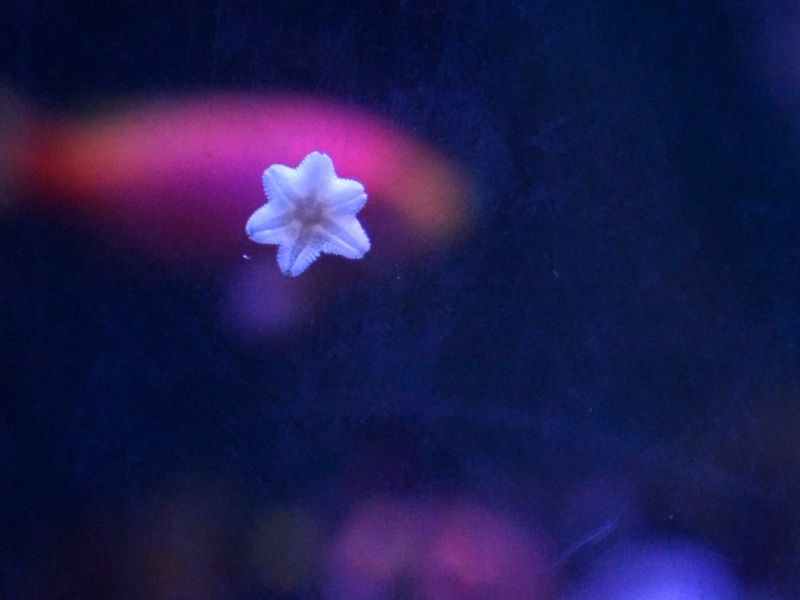
The incredible morphological feature of this starfish is, the star shaped appendages growing out to the body.
They use these unique appendages to move on, to get nutrition and find a shelter. Because of those beautiful appendages, the name starfish has been given to them. They are invertebrates, which means they do not have a backbone.
So those five appendages are made with cell and tissue clusters. It is most likely five arms bonded to the central cercle.
Their upper body surface is very smooth by the number of cells and plates growing on the top. There are various shades, designs and lines that appear on the top of them.
Although Asterina starfish can be seen in different colors, white and brown is the prominent. Sometimes dark red and orange also came as prominent colors.
When talking about their size, they are extremely small compared to the other starfish. Their size ranges from 0.6 cm to 2.0 cm.
Because of the very tiny size, removing or taking them out manually is not an easy task.
Their feeding system is exclusively different from others. Asterina starfish have a tubular system for nutrition and water transportation throughout the body.
It operates by a hydraulic pressure system. Its mouth consists of the lower side of the body. Which means Asterina starfish is moving by covering its mouth.
The lower side of their body consists of tiny appendages which help with their movement.
Those are helpful to their vascular system operations too. And when they move to a substrate, they can attach to it via those appendages.
Because of their nature of living, they always need a substrate for survival. So those tiny appendages are doing a great job.
Let’s have a look at a few species of this beautiful starfish genus.
- Asterina fimbriata
- A. gibbosa
- A. gracilispina
- A. hoensonae
- A. kraussii
- A. stellifera
Where can you find Asterina Starfish mostly?

Distribution of Asterina starfish is not clear. Their distribution depends on the type of the species.
For example, Asterina coronate species native to Vietnam, China, and Indonesia region.
But when it comes to the species of Asterina gibbosa, they are native to the Atlantic Ocean and Mediterranean Sea.
Which means Scotland, Ireland, and the Southern North Sea towards to Mediterranean Sea Tunisia, Morocco, The Canary Islands and Madeira.
Asterina stellifera, another species of this genus, is distributed in the South Africa ocean region.
As you can see, they are living in all the marine environments in the world except the Arctic and Antarctic regions.
Are you going to pet Asterina starfish?
Of course, you can keep Asterina as pet. But you need to have a deep study about their preferred environment.
Normally they cannot live-in a deep aquatic environment. Most of them preferred shallow sea areas where corals can be found. Do not forget to filter the water that you are taking into the aquarium.
Because the non-filtered can be harmful to starfish. Also, you can not rare them on fresh water, There will be deadly consequences
Let’s have a look at the tank
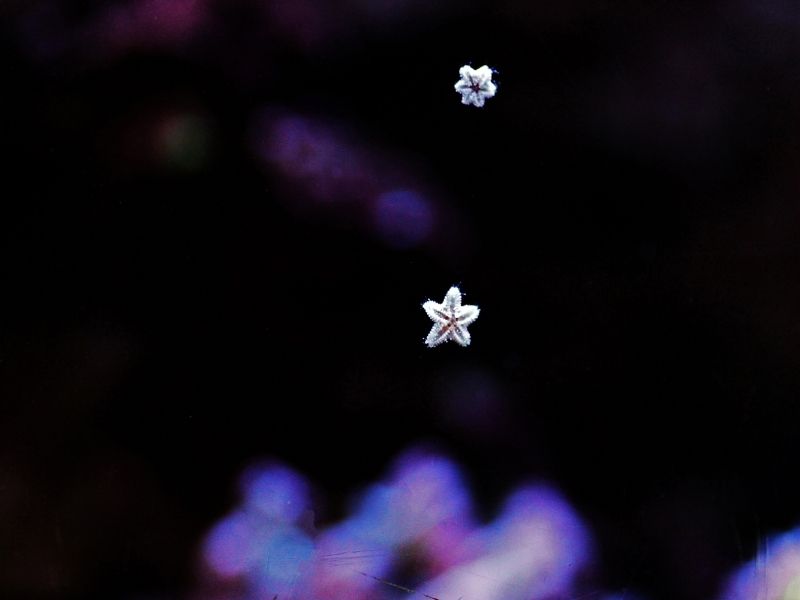
Because of the smaller size of these Asterina starfish, you do not need a bigger tank.
But at least you will need an aquarium with 30 to 100 gallons for their better survival. But it obviously depends on the number of starfish you add to the tank.
A smaller tank of 10 gallons is sufficient for a maximum 10 Asterina starfish. If you are adding more, you probably need to increase the size of your aquarium.
Water quality for Asterina starfish
Although they live in a massive marine environment, when you start to grow them in your aquarium you need to consider the water quality parameters.
As other types of starfish, these Asterina species also preferred the temperature of 220C to 260C in water.
Even if some of them can survive in deviated temperatures, growth of most of the species are optimal in between above temperature limits.
When talking about the salinity level of the water that you are using. It should be between 1.020 and 1.026 . You can increase the salt level of water slowly. Because the rapid changes of salt level can be damaging to the arms of the starfish.
pH is another important parameter while you are starting to pet a starfish. Most Asterina starfish prefer the pH level of 8.1 to 8.4.
Flow rate preferred by Asterina Starfish
The smaller size fish needs a less flow rate. The Asterina species also needs a small flow rate to the tank. Because heavier flow rates can cause a huge pressure over them.
Which may kill the starfish. Suppose you have a 30-gallon tank for adoption of Asterina species. Then you will need to pump and filter the water with a flow rate of 120gph.
Does Lightning affect the growth of starfish?
Yes of course. You will need to set a whole spectrum of lightning to your aquarium if you are planning to pet Asterina. You cannot grow them in a dark and crowded aquarium.
Important facts before you adopt Asterina starfish in a tank
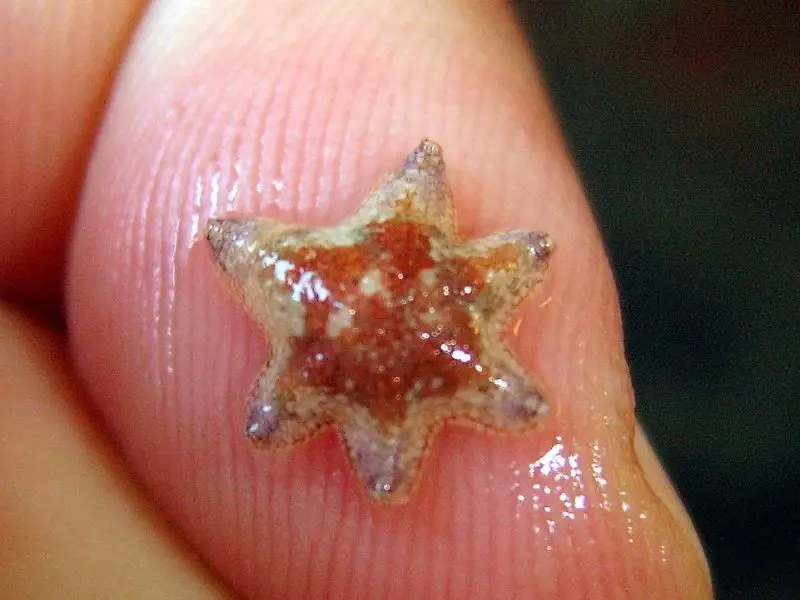
Add your starfish to a well-established tank
Do not put your starfish into a brand new , or abandoned tank. Because starfish are too sensitive to adjust to the new water tank requirements. So, your tank and water must be kept together for some time before you add the starfish.
Also, even if your tank is maintaining good, do not put the starfish, if the tank contains something related to copper metal. Because copper is toxic to starfish.
Maintain the correct temperature value
The preferred temperature value is 220C to 260C in water. The normal tropical water tanks have the temperature value of 250C to 270C.
So, you do not need to change the temperature more to accommodate the starfish in the tropical region.
But if you are in a temperate region you need a heater to maintain preferred temperature. Get an aquarium thermometer to monitor the correct temperature levels.
Once you have reached the optimum temperature you can introduce your pet to the tank.
Get the correct information about the salinity of the tank
Suppose you are purchasing a starfish from a supplier. Probably you need enough information about its salinity level.
If you have one or more tank mates for your Asterina starfish, then you need to evaluate the salinity level for them also.
If their salinity level is more different than your starfish, it is better to keep it in a separate tank with a relevant salinity level.
The better way to adjust your starfish
Your starfish came to your aquarium in a supplier produced water container. It can be either a sealed polythene bag or a sealed container.
First of all, you need to let the water container or the polythene bag for a few minutes in the aquarium you set up for the adoption. Which allows them to set at a uniform temperature.
Then keep the temporary container close to your aquarium to establish a drip line between those two.
Normally drip lines are available in aquariums and online shops. Those drip lines can control the liquid pouring at the end of the pipe.
Then set the flow rate of the dripline as 2 to 4 drops per second. Although it will take more time, it is the best way to adjust your Asterina starfish to the tank.
When the temporary container is full, pour half of its water out and repeat the process several times.
After this, you can move your starfish to its new home as fast as you can.
Do not hesitate to touch your starfish with gloves. Carefully take your starfish to your hand and put it on to the rock, coral or whatever the substrate in your aquarium. keep in mind to limit the time that you are exposing your starfish to the air.
How can you breed Asterina Starfish?
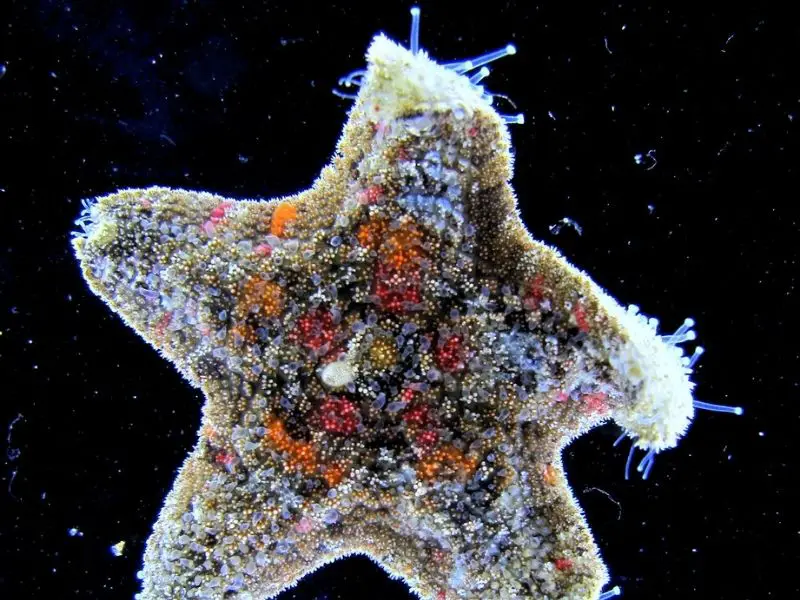
Asterina starfish obtains the asexual reproduction.
One method of the reproduction of Asterina starfish is the fragmentation. Which means their bodies are separated by a middle line to make two daughter starfish.
Another main method of reproduction is the split part of the body parts. Those broken body parts are creating new starfish with the time.
So, when you see them close at their breeding period, you will see some with less appendages. Do not worry about them. Those broken parts will grow entirely with time.
So, the only thing you need to do at that period is, you must provide food and enough substrates for the newborn. Because of the smaller size of them, sometimes you will not be able to see them.
Therefore, be careful while you are cleaning the tank. The best thing is the reduction of the cleaning frequency in the time of breeding of the Asterina starfish.
Life cycle of the sand sifting starfish
They have an average lifespan of around 2 years. But the maximum age is still unknown. But according to the research articles, their lifespan depends on the foods and ecosystem they are living in.
Feeding patterns of Asterina starfish
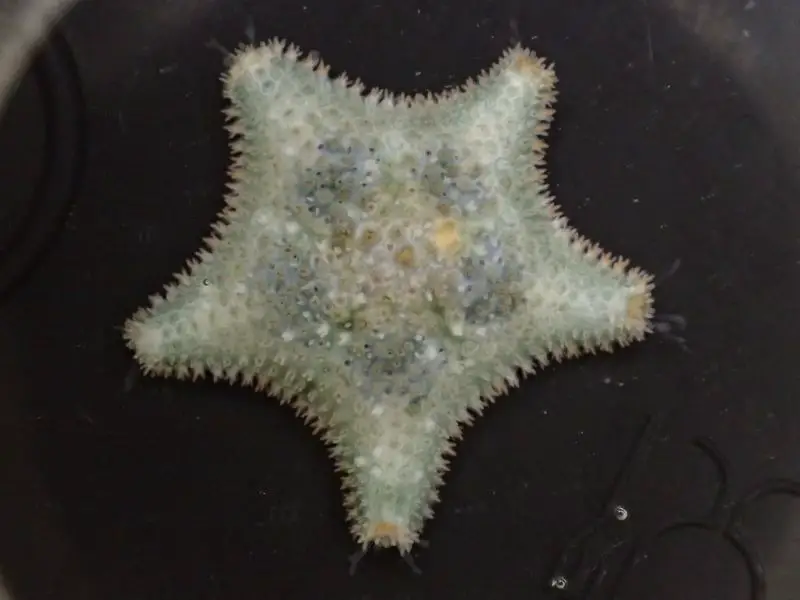
Getting nutrition is the most important thing to every living being. When it comes to aquatic lives, most aquatic lives use algae and sea debris. So, let’s focus on how you can feed your new pet in your aquarium.
What are the foods preferred by Asterina
Asterina starfish mostly feed on macroalgae, bryozoans, tunicates, polyps, biofilms, and some kelp types. All of them are naturally generated in the sea.
Those food debris can float throughout the sea by waves. So, in the ocean no more nutritional deficiencies to Asterina starfish.
Also, these Asterina species are more likely to stay attached to corals. Which are one of the most important living beings in the ocean.
According to research articles, Asterina can destroy your coral in the aquarium also. So, you need to study closely with them to observe whether your new pet destroys your coral.
Feeding frequency for Asterina starfish
Normal Asterina starfish need to feed once in two or three days. But when they are in their natural environment, they have enough food around them. Which makes them eat when they need it.
But in your aquarium, you need to provide food. So, it is recommended to feed in two days intervals.
Predators of Asterina Starfish
Most common predator of the Asterina is the Harlequin shrimp. Their favorite food type is the Asterina species. So, when you are introducing Harlequin shrimp to your aquarium it will be the end of the life of Asterina in your aquarium.
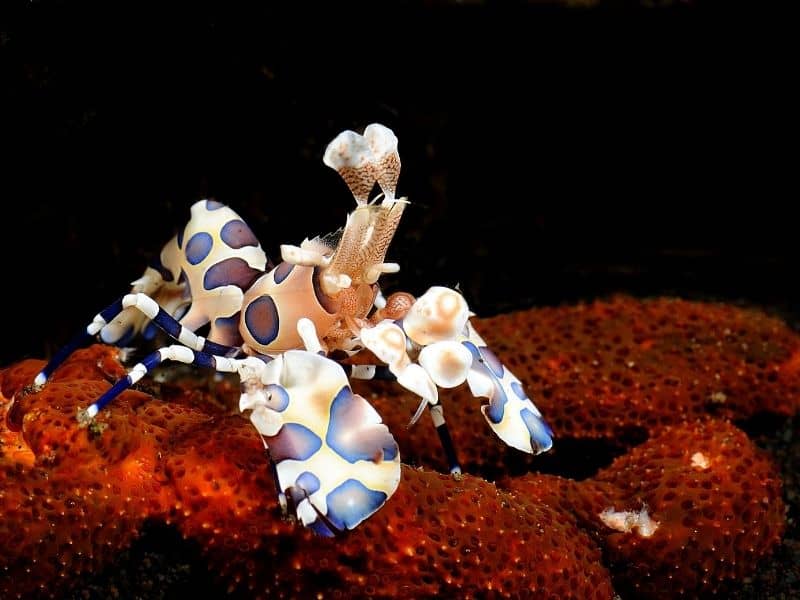
Are Asterina good or bad to the aquatic community?
Normally Asterina species are considered as aquarium pests rather than pets. Because of its feeding patterns and inhabitant patterns, they tend to destroy corals. As previously mentioned, they live in shallow waters where mostly corals can be found.
Corals are incredible biological creatures that will provide several ecological benefits to the world.
They provide shelter to small aquatic lives, provide food and herbs to them, give protection to coastal areas around the world with very few benefits from them.
But your pet Asterina acts against this amazing creature. Initially it started to grow on the coral as the substrate. Then it will start to consume the coral gradually.
Which causes the complete eradication of the coral. It will really affect the reef ecosystem.
So, the common predator Harlequin shrimp is introduced to those areas to protect the coral.
How do Asterina starfish get caught?
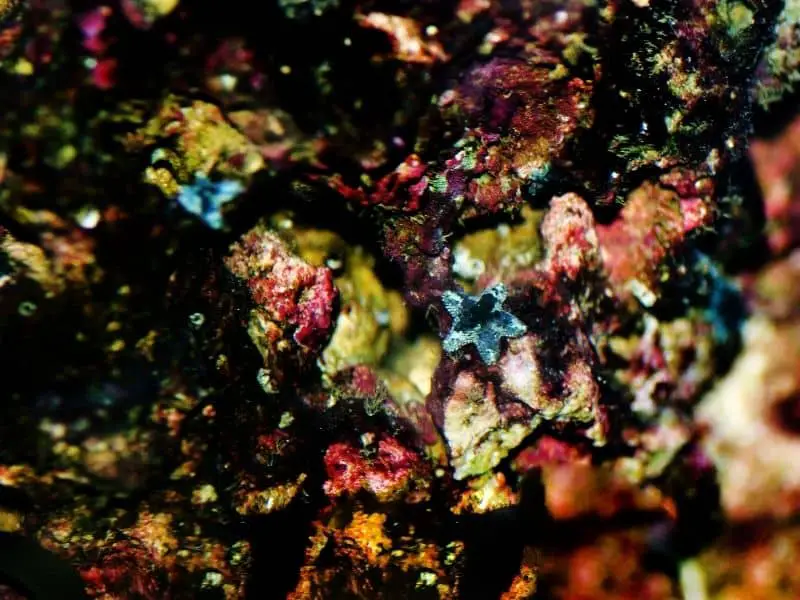
If you are not adopting Asterina in your aquarium at all, but you are keeping corals in it, you need to be careful.
Because of the tiny size of the Asterina, they can be caught somehow when you are collecting other marine aquatic life species from the sea.
Because you cannot observe each and every fish, rock or corals when you are collecting them as bulks. They may come with Asterina species.
Especially if you are collecting from those shallow sea areas. Then probably you will collect those Asterina with you.
So, you need to study your coral growth. A tiny arise of white, brown or red pigmentations on your coral, then Asterina starfish may be the reason for the case. Then you should quickly remove them. If not, you will lose corals completely.
As we discussed earlier, you can add Harlequin shrimp to the tank which is contaminated by Asterina starfish. Because of the smaller size, manual removal of Asterina is impossible. S
o, except adding any chemicals or harmful predators, you can simply add Harlequin shrimp to remove Asterina completely.
Do starfish clean your aquarium?
Yes, of course. Some species have the water tank cleaning ability. Because of the focusing of Asterina in our discussion, some Asterina species are able to clean the tank.
Will you feel curious about that? Well, most of the species of Asterina eat algae as their main nutritional source.
Algae is one of the prominent substances that dirty your aquarium. So, by eating those algae, Asterina starfish helps to clean your tank.
Reasons for the death of starfish
Most of the starfish are very delicate and sensitive to their environment. Therefore, environmental changes are taken the priority of the deaths of starfish.
Changes in sudden water temperature, salinity and pH in the tank can cause lethal effects to these tiny creatures. Also starfish eggs are highly sensitive to temperature changes. If sudden water temperature rises during the breeding season, their eggs can be destroyed.
Are Asterina starfish poisonous to humans?
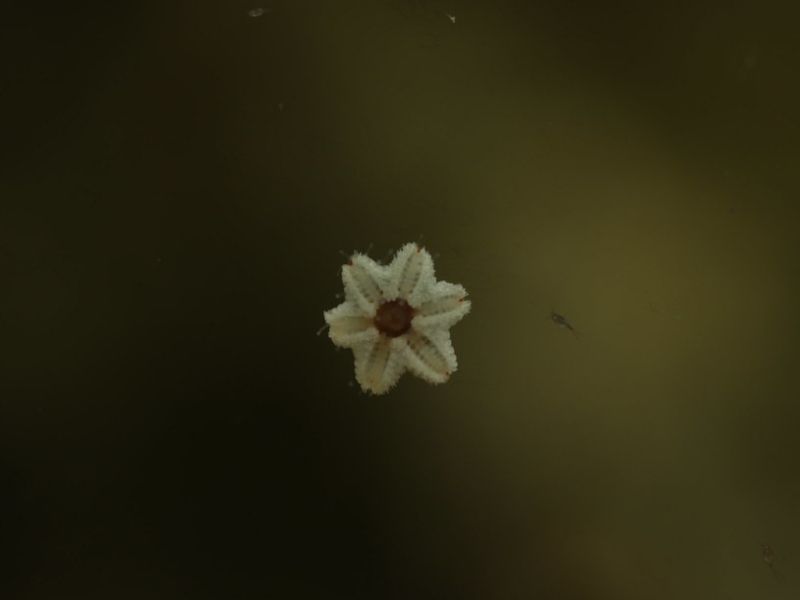
Yes and No. Not all Asterina starfish but some of them are toxic and dangerous to humans.
Species like Asterina pectinifera and A.amurensis contain poisonous materials in their bodies. However, A. gibbosa does not have such a poisonous effect.
As mentioned previously they have amazing appendages that are connected to their central body. Some of those obtain toxin cavities on their appendages.
When a prey or predator gets close to them, they will release the toxin to neutralize the enemy or prey. Those toxins are powerful enough to kill humans.
Also, some starfish obtain little and sharp sparks on their upper body surface. If you are going to touch them with bare hands, you will end up with severe damage to yourself. So always keep in mind that all the starfish are not friendly and innocent.
So, when you are trying to touch them, use protective coverings and enough first aids as much as possible.
Reference
Ito, K., Asakawa, M., Sida, Y. and Miyazawa, K., 2003. Occurrence of paralytic shellfish poison (PSP) in the starfish Asterina pectinifera collected from the Kure Bay, Hiroshima Prefecture, Japan. Toxicon, 41(3), pp.291-295.
Farias, N.E., Meretta, P.E. and Cledón, M., 2012. Population structure and feeding ecology of the bat star Asterina stellifera (Möbius, 1859): omnivory on subtidal rocky bottoms of temperate seas. Journal of Sea Research, 70, pp.14-22.
Rumrill, S.S., 1989. Population size-structure, juvenile growth, and breeding periodicity of the sea star Asterina miniata in Barkley Sound, British Columbia. Marine ecology progress series. Oldendorf, 56(1), pp.37-47.
Read Next : Sohal Tang Fish Care Guide With Pictures |Must Know Points
